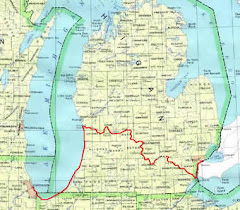 The dimensions of the original Rob Roy used by John MacGregor for the trip described in his 1866 book A Thousand Miles in the Rob Roy Canoe were: Length 15', Width 28", Depth 9", Weight 80#. It drew a scant 3" of water.
The dimensions of the original Rob Roy used by John MacGregor for the trip described in his 1866 book A Thousand Miles in the Rob Roy Canoe were: Length 15', Width 28", Depth 9", Weight 80#. It drew a scant 3" of water.All Rob Roys (there were 7) were clinker built* of white cedar and oak. Some were built by the boat builder Searles of Lambeth, London. The canoe for the Middle Eastern trip was built by "Mr. Pembry" of London. Apparently the hulls were oak and the decks cedar. At least one survives in a British watercraft museum.
* "Clinker built" is a method of boat building in which the lower edge of each side plank overlaps the one below it. This is also known as "lapstrake." Properly done there is no need for glue or caulking.
Like MacGregor, Verlen was not satisfied with his first craft and kept modifying them. Unlike MacGregor, he didn't have someone else build them for him.
J. Henry Rushton, the world-famous builder of canoes in Northern New York in the latter part of the 19th Century built canoes patterned after the Rob Roys. From the "Louisville Commercial" August 2 1876: "The Rob Roy Model is a boat of oak or cedar fourteen feet long, twenty-six inches wide, about nine and one-half inches deep, and, as all canoes, pointed at both ends, with much sheer and very slight curvature. In a canoe of this sort, weighing about seventy pounds, MacGregor has been cruising hundreds and thousands of miles, on both continents, for years."
Substitute "Loon" for "Rob Roy", "Kevlar" for "oak or cedar" and "Kruger" for "MacGregor" and it could be an article from a 1976 newspaper.
In Rob Roy on the Jordan MacGregor goes into great detail about where everything was stored in the canoe including his pistol and holster on the right side of the cockpit and his brandy bottle on the left. I'll have to ask Valerie where she and Verlen kept theirs.
The name Rob Roy comes from Robert Roy MacGregor, an ancestor of John. He was a famous Scottish folk hero and outlaw of the early 18th century, sometimes known as the Scottish Robin Hood. He was usually known simply as Rob Roy.


No comments:
Post a Comment